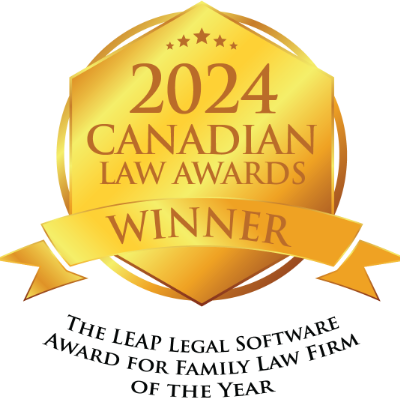
Vancouver Surrey Adult Child Support Guidelines apply to cases involving children over the age of 19 in BC and 18 in Alberta. For more than 30 years, courts have ordered support for older children in school. In many cases, child support continues until the children completed a post-secondary degree, and sometimes later. The court must apply a 4 step test. Disputes arise over part time attendance, unreasonable educational plans, out of Province education and the duty of a child to contribute. MacLean Law’s top rated* family lawyers have 6 offices across Western Canada in Vancouver, Surrey, Calgary, Richmond, Kelowna and Fort St John.
How Do The Vancouver Surrey Adult Child Support Guidelines Work?
For a great summary of the Federal law and cases in the area click here. The key section of the Vancouver Surrey Adult Child Support Guidelines in these cases is Divorce Act section 2:
child of the marriage” means a child of two spouses or former spouses who, at the material time,
- is under the age of majority and who has not withdrawn from their charge, or
- is the age of majority or over and under their charge but unable, by reason of illness, disability or other cause, to withdraw from their charge or to obtain the necessaries of life;
Vancouver Surrey Adult Child Support Guidelines Sections 1-877-602-9900
In the latest BC Court of Appeal decision of McClement v McClement The Court dismissed an appeal from a discretionary order of support for an adult child in full-time education. It was not demonstrated that the judge erred in principle in making the order under s. 3(2)(b) of the Guidelines rather than s. 3(2)(a).
[2] It is common ground that this order is based on s. 3(2)(b) of the Guidelines, rather than s. 3(2)(a) of the Guidelines. Those sections read:
Unless otherwise provided under these Guidelines, where a child to whom a child support order relates is the age of majority or over, the amount of the child support order is
(a) the amount determined by applying these Guidelines as if the child were under the age of majority; or
(b) if the court considers that approach to be inappropriate, the amount that it considers appropriate, having regard to the condition, means, needs and other circumstances of the child and the financial ability of each spouse to contribute to the support of the child.
Vancouver Surrey Adult Child Support Guidelines Law 1-877-602-9900
Here is the process a judge is to follow in a Vancouver Surrey Adult Child Support Guidelines case:
[7] The primary issue taken on this appeal is that the judge erred in failing to follow the four-step test set out by Madam Justice Martinson in Wesemann v. Wesemann, 1999 CanLII 5873 (B.C.S.C.), to determine which approach under s. 3(2) should be used. That test is set out at para. 6:
Step One
Decide whether the child is a “child of the marriage” as defined in the Divorce Act? If s/he is not, that ends the matter.
Step Two
Determine whether the approach of applying the Guidelines as if the child were under the age of majority (“the usual Guidelines approach”) is challenged. If that approach is not challenged, determine the amount payable based on the usual Guidelines approach.
Step Three
If the usual Guidelines approach is challenged, decide whether the challenger has proven that the usual Guidelines approach is inappropriate. If not, the usual Guidelines amount applies.
Step Four
If the usual Guidelines approach is inappropriate, decide what amount is appropriate, having regard to the condition, means, needs and other circumstances of the child and the financial ability of each spouse to contribute to the support of the child?
Newer Cases Update Approach In Vancouver Surrey Adult Child Support Guidelines
[10] I turn to consider the primary ground of appeal. The first difficulty with the argument is that this Court has in at least two cases reformulated, in a manner that overtakes the Wesemann test, the approach to be taken in dealing with child support for adult children undertaking continuing education. First, in W.P.N. v. B.J.N, 2005 BCCA 7, Madam Justice Levine said this:
[39] The second and third steps of the test as articulated by Martinson J. require that one of the parties challenge the application of the “usual Guidelines approach” to determining child support. There may be cases, however, where a party has not challenged the appropriateness of the application of s. 3(2)(a), but the court considers, on the facts of the particular case, that it is inappropriate. In my opinion, the absence of a challenge does not preclude consideration of s. 3(2)(b) and in such a case, the court should determine child support under that provision.
…
[42] In my opinion, in principle, support for an adult child who is entitled to child support because of his or her attendance at a post-secondary institution generally should be determined under s. 3(2)(b). The “table amount”, as noted by Martinson J. in Wesemann, contemplates a contribution by the non‑custodial parent to the expenses borne by the custodial parent in providing a home for the child. The fact that the “table amount” increases incrementally and not absolutely for additional children supports that interpretation of the intention of the Guidelines. The “table amount” does not contemplate a child’s contribution, which is an important factor in considering the amount of support a student requires.
[11] This passage was commented on recently in De Beck v. De Beck, 2012 BCCA 465. There Madam Justice Smith said:
[56] Just as the absence of a challenge to the “usual Guidelines approach” under s. 3(2)(a) should not preclude a consideration of s. 3(2)(b), similarly the fact that an adult child is attending a post-secondary institution while living at home should not in my view foreclose a consideration of the approach under s. 3(2)(a). In each case, the choice between applying s. 3(2)(a) and s. 3(2)(b) will be a discretionary one that will be governed by the circumstances of that case.
[12] In sum, the choice between the two sections is discretionary and determined by the particular circumstances of each case and there is no specific requirement formally to challenge relying on s. 3(2)(a) before a judge can consider whether it is inappropriate to apply that subsection rather than s. 3(2)(b) and or vice versa. The view taken by this Court is that the burden of proof rests with each party in the ordinary manner to persuade the court which of the two sections is the appropriate one to apply in the particular circumstances before the court. There are of course factors that tend to support the appropriateness of relying on one section rather than another and which guide the exercise of a judge’s discretion. For example, the more closely the circumstances of the adult child resemble those of a minor child living at home, the less likely it is that the approach found in s. 3(2)(a) will be determined to be inappropriate. Each case will depend on its facts. In the result, the appellant has not demonstrated any error in principle in the judge’s exercise of discretion to make an order under s. 3(2)(b).
I hope this article helps you understand how Vancouver Surrey Adult Child Support Guidelines works for cases involving adult children. The area can be confusing so call us at 1-877-602-9900 to come up with a plan to ensure your child succeeds and makes their fair contribution to their post secondary education.
For an explanation of how retroactive child support arrears work for an adult child read this article.








